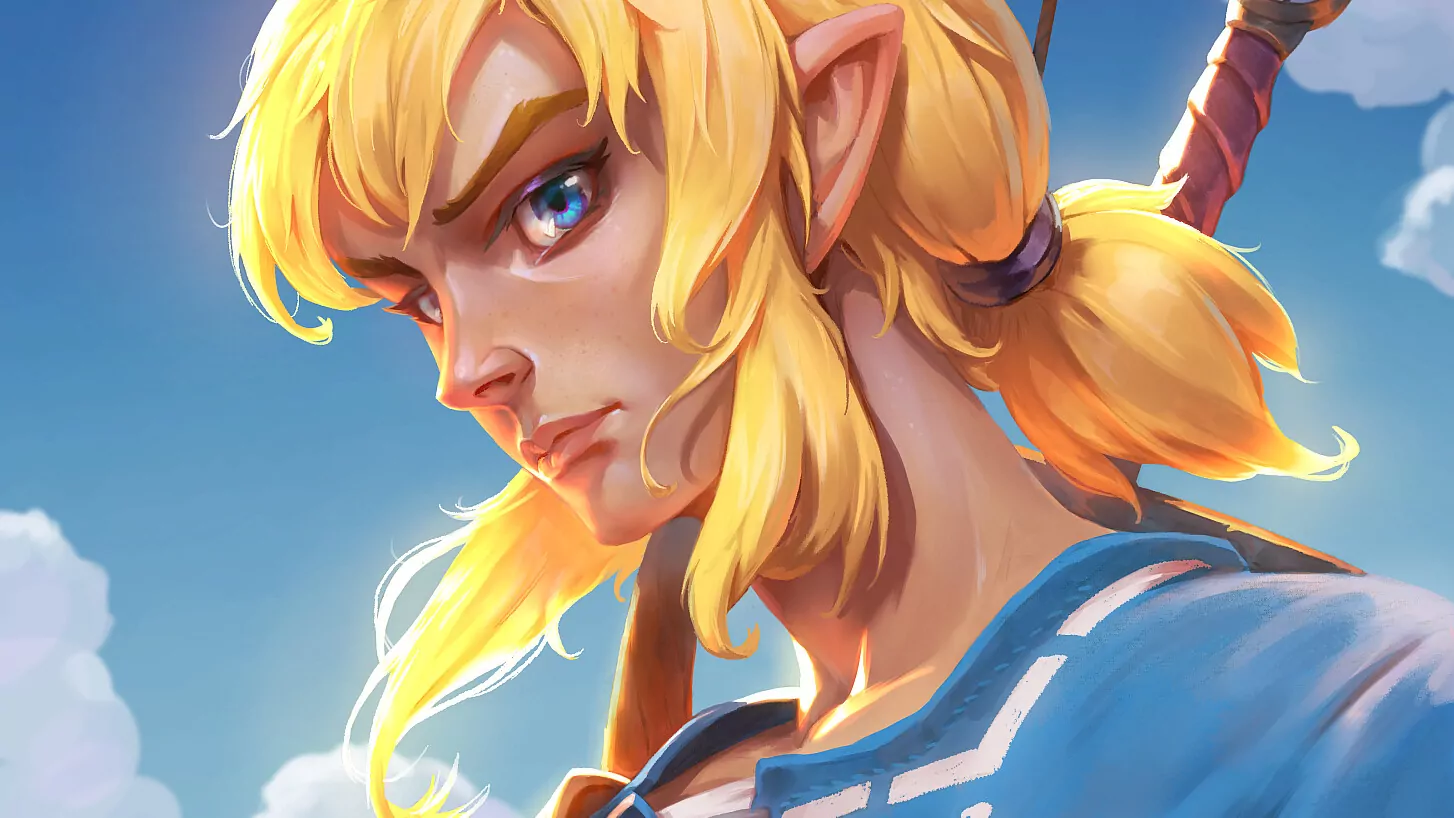Highlights: Inkscape 1.2 goes alpha, Weston gets essential color management support, Blender Studio announces new open movie project, new releases of Blender, BlenderBIM, Ossia Score, Mixxx, Shotcut, PipeWire.
Inkscape 1.1.2 and Inkscape 1.2-alpha
This is great news. The updated stable release brings a ton of bug fixes and the 1.2 alpha brings pretty much every new feature I shared with you here and on Twitter, and then some.
Here is a quick rundown:
- Pages tool to create multiple pages and manipulate them (rearrange, resize, remove)
- Alignment snapping aka snapping guides aka smart guides
- New settings UI for the bottom color swatches toolbar
- Dithered gradients to suppress sharp transition
- Updated Fill and Stroke dialog with gradient editor built right in
- Layers and Objects dialog merged into one
- Batch exporting now available to multiple formats (SVG, PDF etc.), with pages support
Something I want to focus on is rendering performance improvements. I can’t stress enough how much work went into this. The merge request went through a massive review by the team, which resulted in numerous improvements of the original patch. It is not complete but the fix was important enough to make it part of the alpha release so that most bugs would be fixed during the final stage of v1.2 development.
I remember how back in 2010 at Libre Graphics Meeting in Brussels, the GNOME design team basically told Inkscape developers on stage: “Feature-wise, Inkscape is fine, we love it! Can you please make it faster now?". Well, here you are :)
Weston v10.0
Reference Wayland compositing manager Weston had its v10.0 release last week with a major change: initial support for color management (“color transformations, gamma correct blending, color profiles” as per release announcement).
Two important notes here:
- This is only an internal change not exposed to users in any way yet.
- You won’t see this in either Mutter (GNOME) or KWin (KDE) or anywhere else just yet either.
Nevertheless, it’s a major step towards making Wayland actually usable for professional work. Pekka Paalanen who worked on this did a lot of reading up on color science and he’s very humble about it:
My work on Wayland and Weston color management and HDR support has been full of learning new concepts and terms. Many of them are crucial for understanding how color works. I started out so ignorant that I did not know how to blend two pixels together correctly. I did not even know that I did not know — I was just doing the obvious blend, and that was wrong. Now I think I know what I know and do not know, and I also feel that most developers around window systems and graphical applications are as uneducated as I was.
…which is a sentiment I can share (up to a point). Color science is an incredibly humbling topic. Pekka also did a write-up on what he learned. There’s ongoing research on dealing with HDR displays, you can see here for specs and working notes.
I briefly spoke about all this to Richard Hughes who wrote the original color management stack in GNOME. Red Hat indeed hired someone to work on color-managed HDR displays (whether real HDR or the silly HDR400 thing), there’s ongoing work. So yes, we should expect this to land to GNOME at some point.
Blender 3.0.1
There have been multiple bugfix releases the past two weeks:
- Blender 3.0.1 with over 90 bug fixes
- Blender 2.93.8 LTS with 28 fixes
- Blender 2.83.19 LTS with 31 fixes
And if you are looking for brand new features, Blender 3.1 is officially a beta now. Here are release notes for 3.1 so far and here is a review by askNK:
The team also posted strategic plans for 2022 that I missed in the previous recap. Highlights:
- Application Templates, currently experimental feature that needs work
- Library overrides also need further work
- Support for physics dynamics in Geometry Nodes
- Node-based textures + mask painting = better non-destructive painting pipeline
Blender Studio announced Watchtower, a web-based tracking tool for film production. It is built around Kitsu (also a free/libre project) and was developed during the production of Sprite Fright. Here is my coverage of the news from last week. There’s a little pushback on the name choice because it’s associated with Jehovah’s Witnesses. Other than that, everyone’s pretty excited.
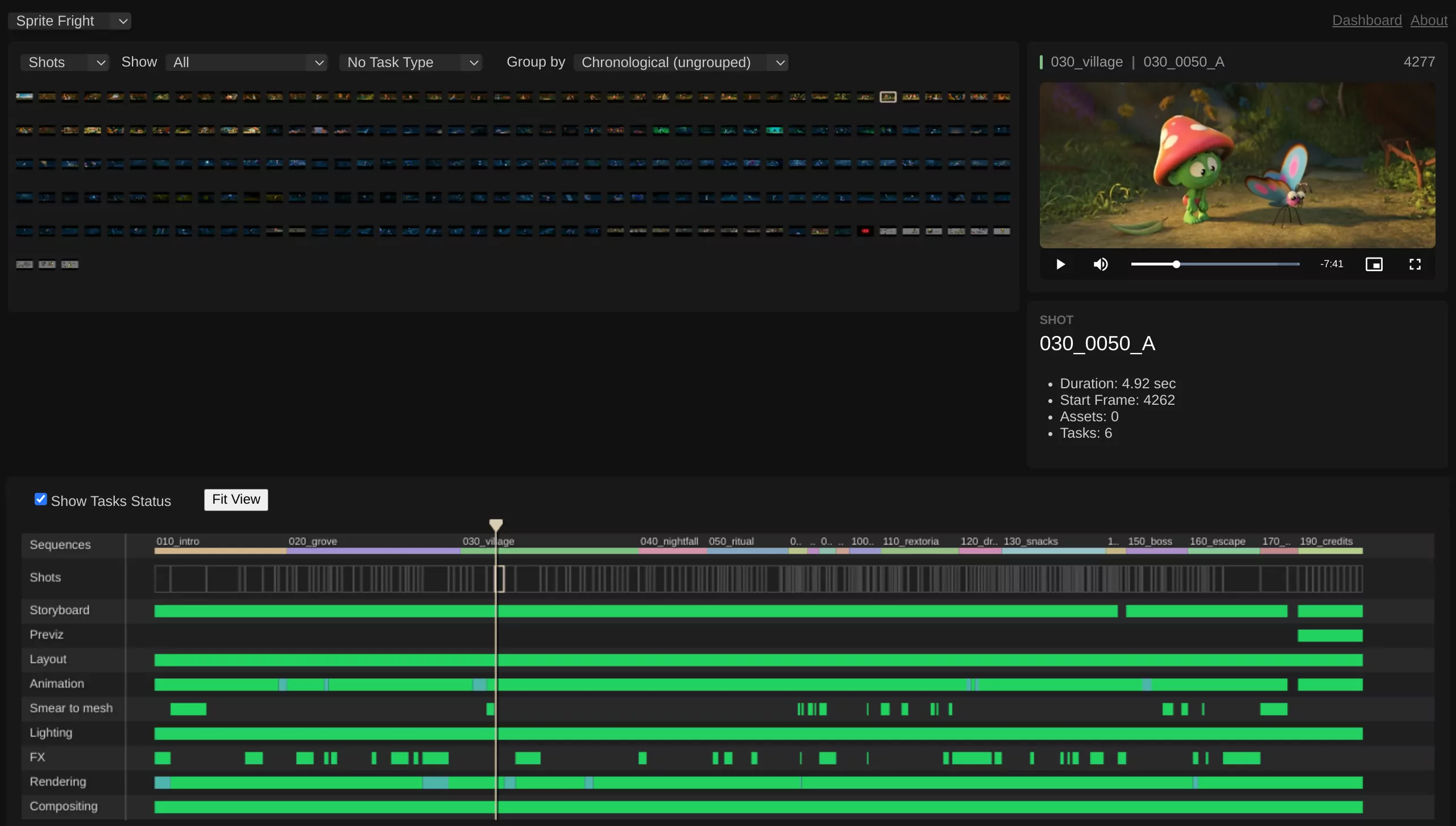
The Studio has another project in the pipeline, which is a new iteration of Flamenco render manager, built with Go this time.
And then a new movie project has been announced with not much details available yet. The codename is Project Heist and it will be “a high-visual-impact, action-packed 2-minutes-long animation” with focus on characters and environment realism.
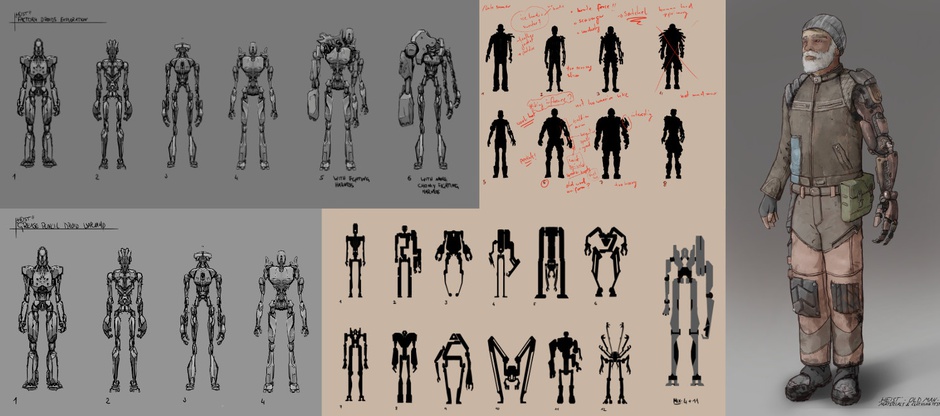
Early character research sketches
Francesco specifically mentions these areas of improvement in Blender to follow suit: interactive PBR workflow, new and better tools (EEVEE, texture painting, baking, etc.).
BlenderBIM v0.0.220130
Despite a short break for a variety of reasons, Dion et al. managed to get 252 new features and fixes into this release. I don’t know how they do it!
Highlights:
- Modification of large files now up to 100x faster, geometry cache now saved so reopening will be faster too — all thanks to Thomas Krijnen
- +450 tests to reveal and help fixing stability issues
- You can now create a two-way link between IFC BIM models and Brickschema models, first BIM software to ever do so
- New bulk property editor, originally developed by Vukas Pajic to clean up OpenBIM data
- Better 2D generation (still not completed, it’s a process): improved section cutting booleans, new 2D elements in the demo library, paper scale annotations in the viewport and much more.
See here for release notes.
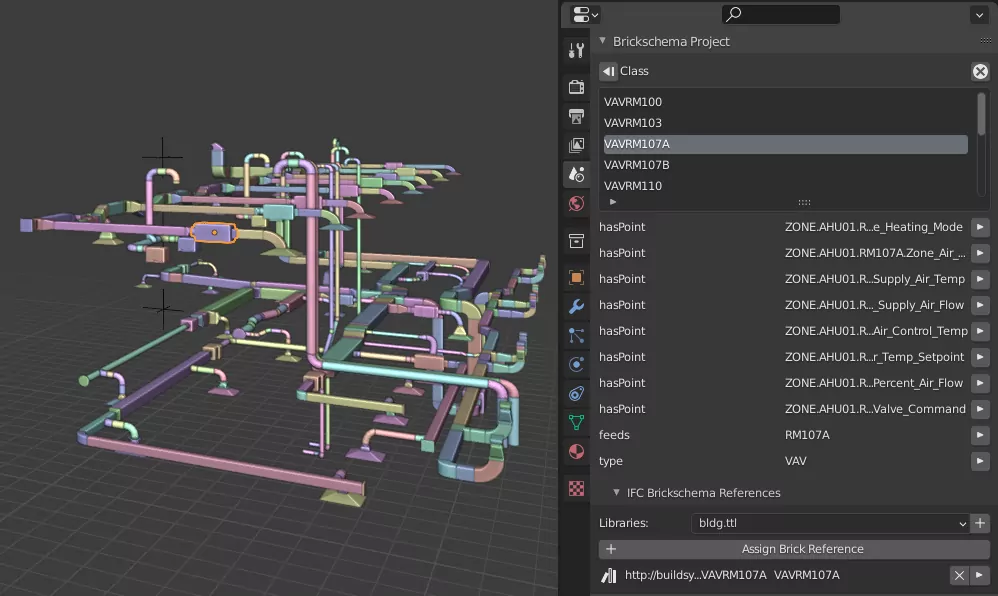
Ossia Score v3
Jean-Michaël Celerier released a major update of Ossia Score, an intermedia sequencer where you can bridge sound, video, MIDI, OSC, VST and more on a timeline with node compositions.
Major changes since last release are:
- JSFX support (Reaper plugins) thanks to a host library by the almighty Jean Pierre Cimalando
- Official builds for Raspberry Pi
Shotcut 22.01
This release comes with three new equalizer filters: 3-band, 15-band and Parametric.
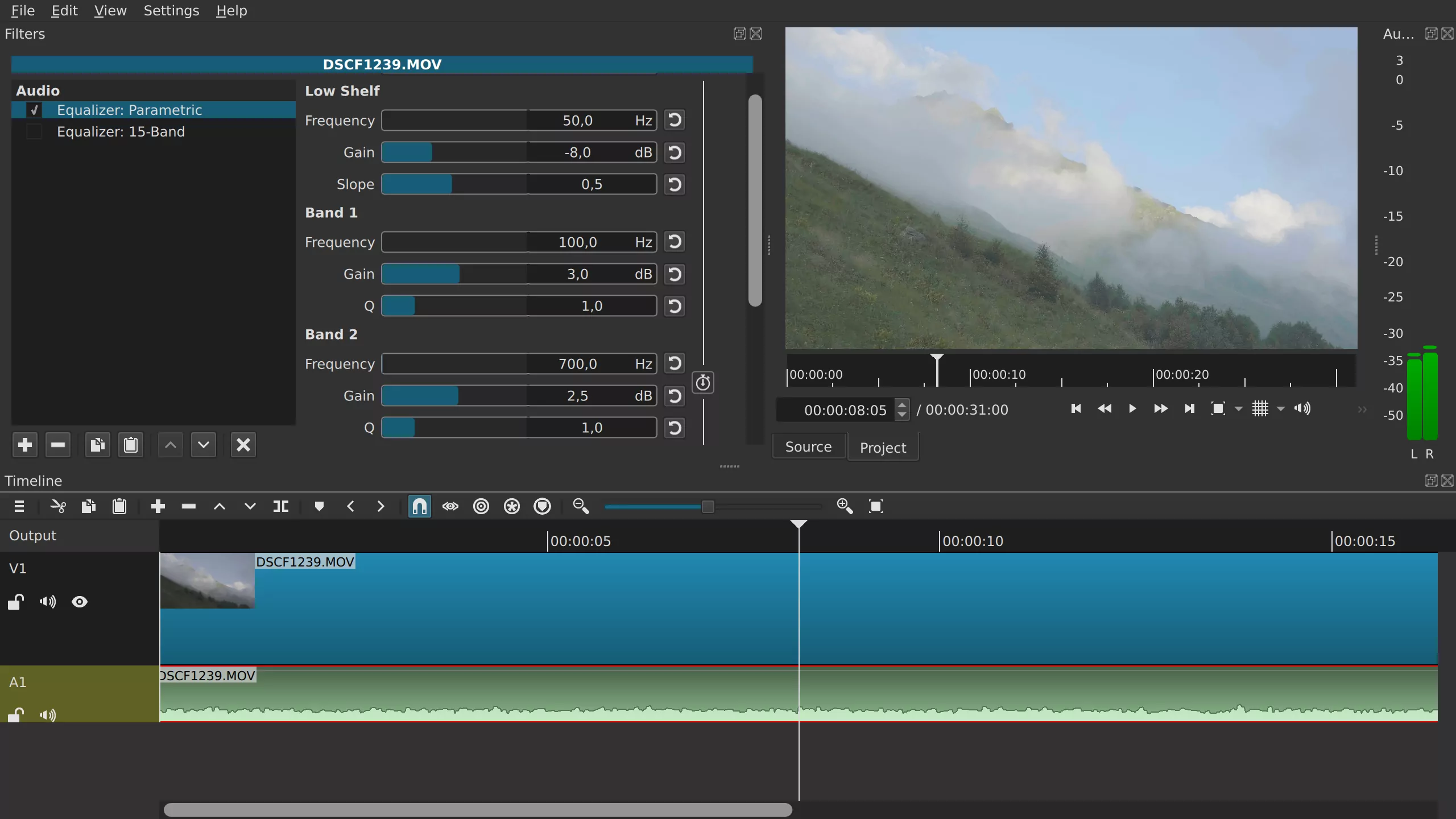
There’s been more changes and improvements all around, including two Wayland-specific ones: Wayland compatibility in the flatpak build and improved compatibility of VA-API hardware encoding on Wayland. See here for a full list of changes.
Olive development update
There’s been a bunch of changes again:
- Polygon generator now support Bezier curves, UI will need more work, but this is a good first step towards masking
- Two new options for tempo change: Reverse and Maintain audio pitch
- New exporting options: Cineform codec support, x264 and x265 presets
- New nodes: noise generator, flip/flop, time offset
- Full icon review, simplification and standardization
There’s more in the works. e.g.:
- Various new nodes
- OpenColorIO transforms in nodes
- Better markers implementation.
Mixxx 2.3.2
This is basically a bug fix release with newly added control mapping for Pioneer DDJ-SB3. So if you have it, enjoy :) Here is the release announcement with the list of improvements.
PipeWire 0.3.44/0.3.45 and Helvum 0.3.3
There have been two PipeWire releases in the past two weeks. Collectively:
- It is now possible to run a minimal PipeWire server without a session manager, enough to run JACK clients
- The maximum buffer size is now configurable and can be larger than the previously hardcoded limit of 8192 samples. When using high sample rates, the larger buffer size can help avoid xruns
- Maximum latency reduced from 170ms to 42ms
- Better JACK compatibility: a better way to force and lock JACK buffer size, less confusion about ports appearing and disappearing in patchbays
- Desktop apps like Zoom and Telegram should be able to play sound again
- Improved default sink and source names and properties
There’s more news than that. PipeWire patchbay called Helvum is now available on Flathub too.
Ardour is getting a clip library
The Ardour team continues hacking on the Cue workspace. There have been multiple improvements since last weekly-ish recap. Most notable one is the introduction of a clip library. Basically you can set up a folder with audio and MIDI clips available for any session and then drag clips between the library and the clip launchers. You can also pick any available instrument to play MIDI files in the library.
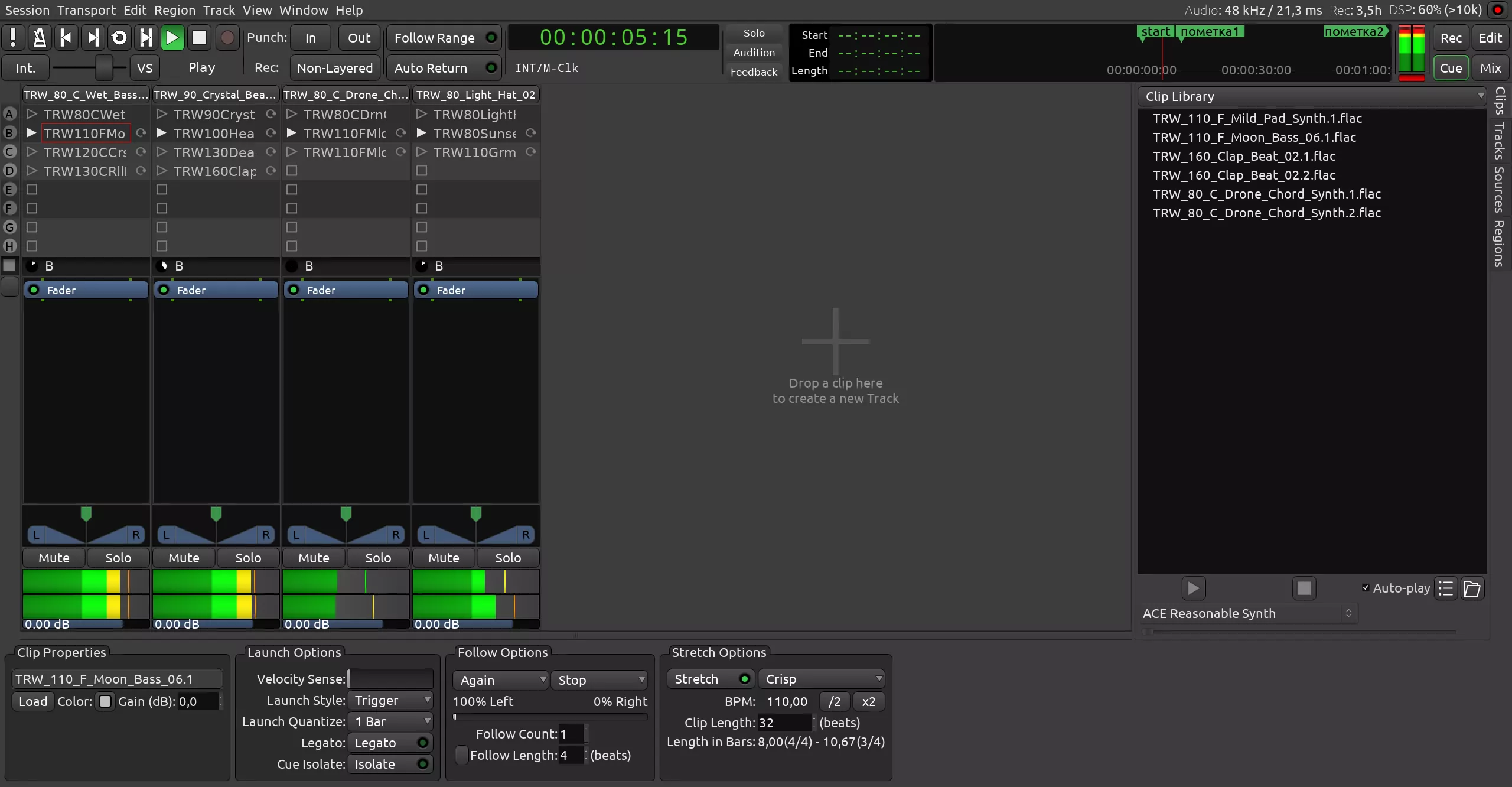
It’s also possible to do a multi-jump (A to H scenes) from a clip now. If you have any experience with Ableton live, you’ll feel right at home with the follow options.

Other than that, several more bits of the user interface now scale properly on HiDPI displays: default track heights, region-gain, automation lane control points. max. MIDI note lane height.
As usual, nightly builds of Ardour 7 are not yet intended for use in production. The last time I mentioned this, I said that the file format might change yet. And indeed, one of my test sessions made with Ardour 7 cannot be loaded anymore.
More audio software updates
Unfa reviewed some of the recent releases:
Tutorials
Recreating Minas Tirith In Blender, by sketching in blender:
Great tutorial from Freed Creative on making an isometric mini-world with Krita:
Random object modeling with FreeCAD, by Mindaugas Petrikas:
Artworks
Link (Legend of Zelda) by Sergey Samarskiy, Krita:
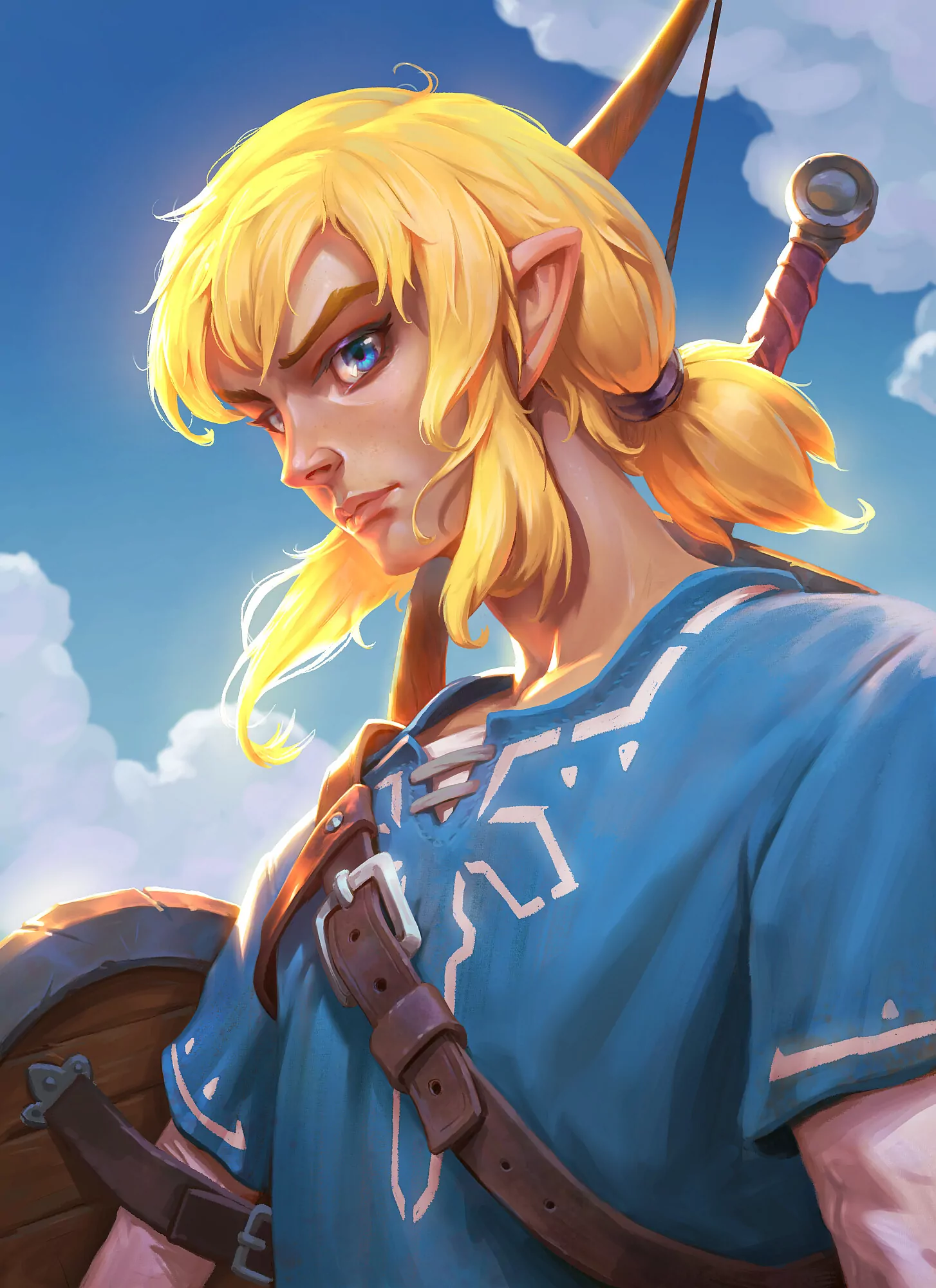
And a video for coloring lineart:
David Revoy, The TODO list, Krita:
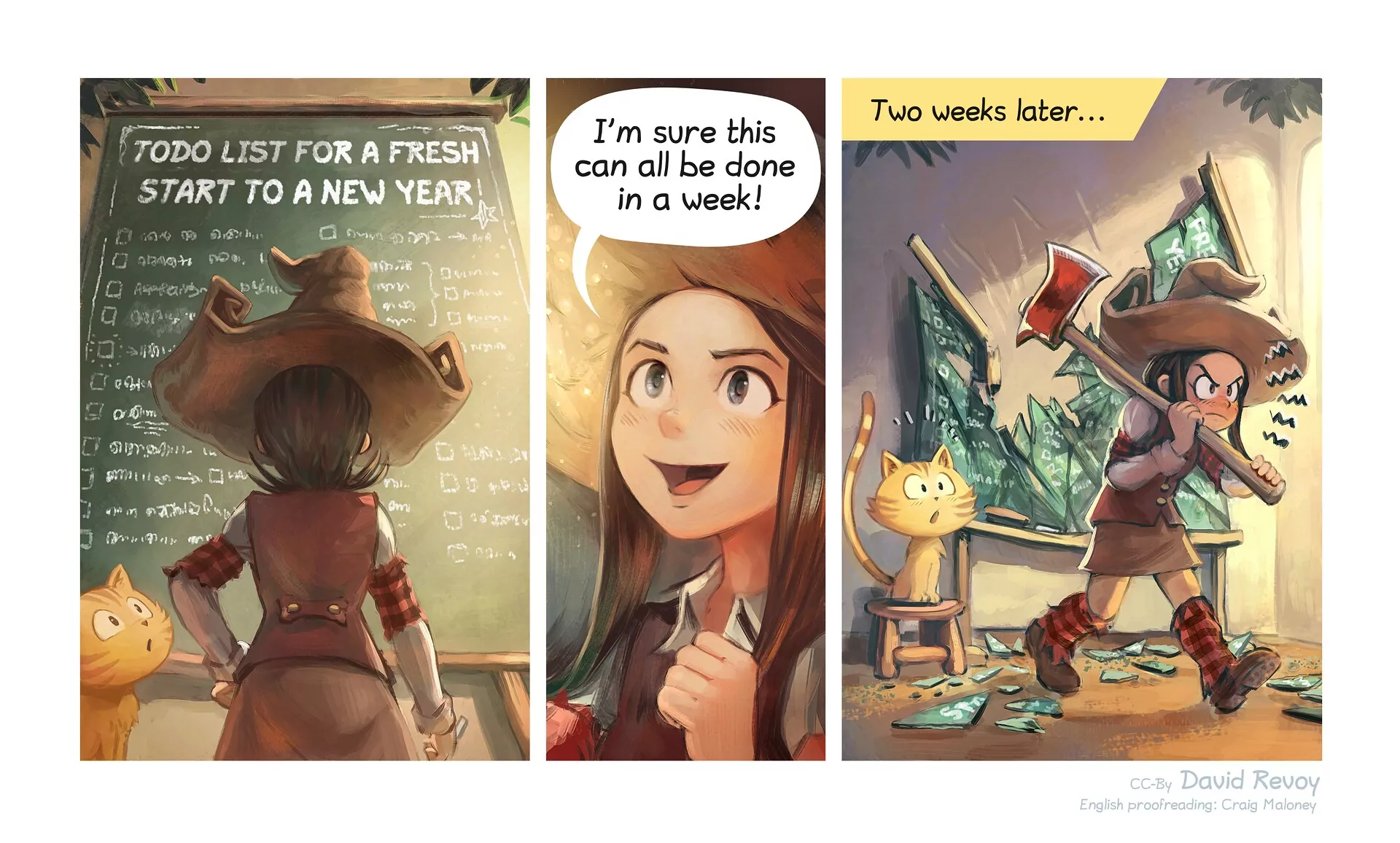
Sylvia Ritter, Nine of Coins, Krita:
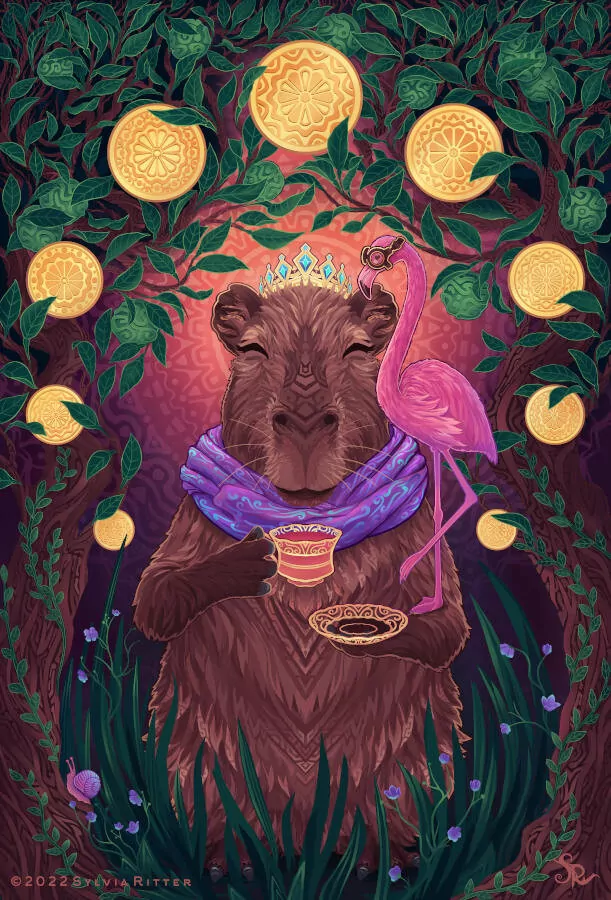
Sanctus, who recently went through the ordeal of having two YouTube channels stolen from him, keeps making interesting things. You might think this little rat is nothing special…
#geometrynodes #b3d ❤️ pic.twitter.com/W6iCjBG42y
— Sanctus (@Sanctus_Art) January 29, 2022
…expect it’s 100% geometry nodes:
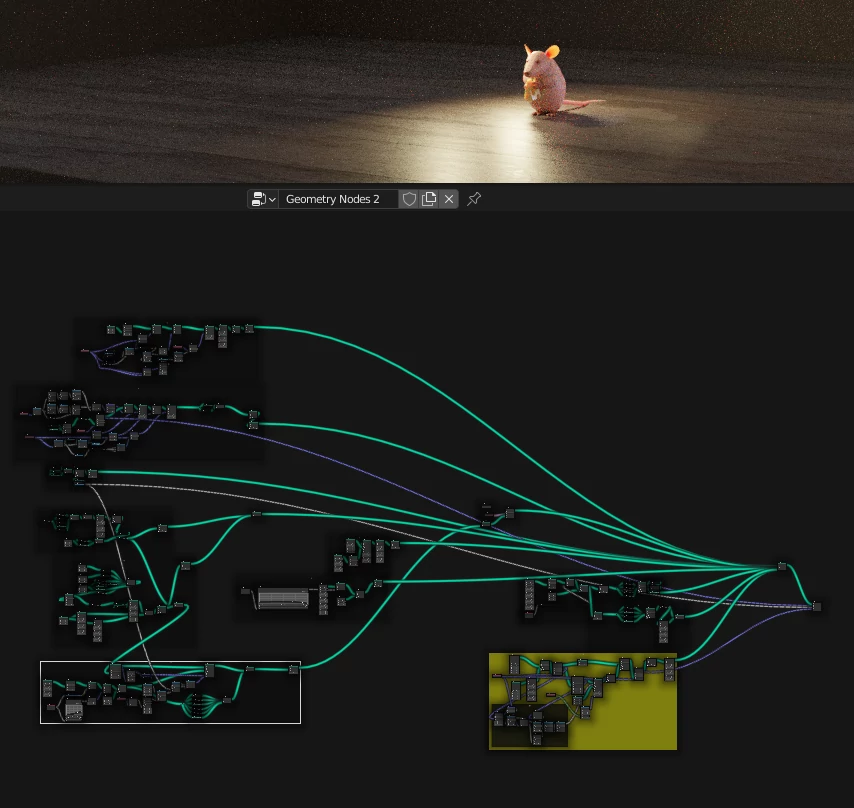
Ivysaur by Nhut Nguyen, Blender:

Patreon subscribers get early access to my posts. If you are feeling generous, you can also make a one-time donation on BuyMeACoffee.
